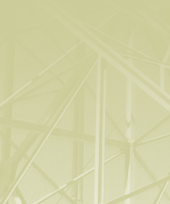EE 350 Radioscience Seminar
Professor Howard Zebker
Autumn 2003-2004
Date: Wednesday, October 29, 2003
Time: 4:15 PM – Refreshments at 4:00
Location: Bldg.
TC SEQ, Room 101
|
Dual-Use Space-Borne Radar
Applications and Technology
Dr. Paul A Rosen
NASA
Jet Propulsion LaboratoryAbstract
NASA and the Air Force are currently jointly studying
technologies and missions for large aperture space-borne radar
systems that can satisfy the objectives of both agencies.
Missions focus on elements of NASA's Earth Science Enterprise
Strategic Plan and Air Force long term needs for airborne moving
target indication. A possible design for a prototype system
specifies a low center frequency such as L-band, a large
physical aperture between 50 and 150 square meters, and on-board
processing capability for Synthetic Aperture Radar and Moving
Target Indication applications. Such a mission would provide
technology validation and short term science return, and will
lead to the next generation of Space-based Radar systems. The
system incorporates active metrology for measurement of the
shape of the aperture, and electronics and processing capability
for active compensation of the aperture surface deformation. The
goal of the mission is to demonstrate the ability to maintain
coherence in a very large aperture in the space environment, to
show scalability to larger apertures, and to demonstrate the
ability to deliver fault-tolerant real-time products in space.
The system will also permit characterization of spaceborne
L-band AMTI phenomenology. This talk will describe some of the
science and phenomenology that leads to the definition of system
needs, and the hardware currently under development. |


